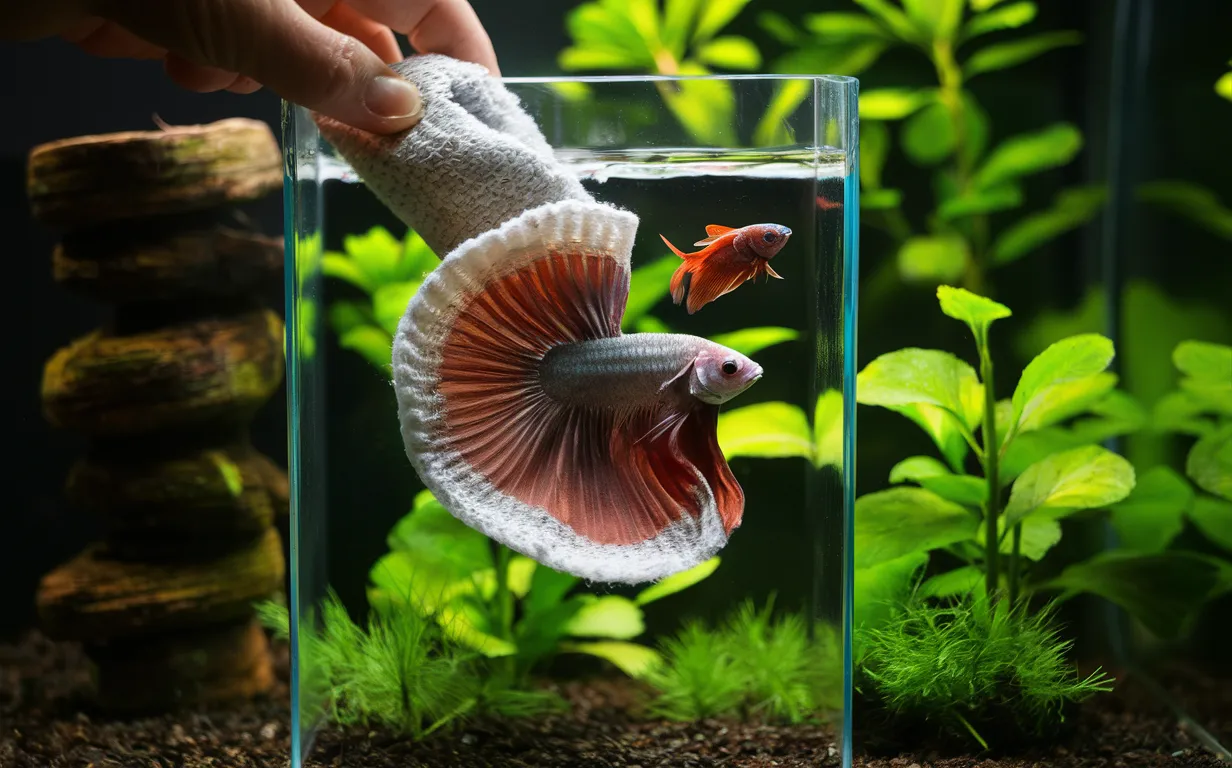Maintaining a healthy aquarium environment is crucial for the well-being of your Betta fish and other aquatic populations. One important aspect of this maintenance is regularly cleaning the filter socks, which play a vital role in removing debris and keeping the water clear. In this comprehensive guide, we’ll walk you through the step-by-step process of cleaning your aquarium filter socks, ensuring your Betta’s underwater home stays pristine. In this article, Betta Fish 247 will explore how to clean filter socks?

How To Clean Filter Socks?
Filter socks, also known as filter media bags, are a type of mechanical filtration used in aquarium setups. These socks or bags are designed to trap large particulate matter, such as uneaten food, fish waste, and other debris, preventing them from circulating in the water and potentially causing issues for your Betta fish.
Over time, these filter socks can become clogged with accumulated material, reducing their effectiveness and potentially impacting the overall water quality. Regular cleaning of the filter socks is essential to maintain optimal water conditions and support the health of your Betta fish.
When to Clean Filter Socks
The frequency of cleaning your filter socks will depend on various factors, including the size of your aquarium, the number of fish, and the amount of debris generated. As a general rule, it’s recommended to clean your filter socks every 2-4 weeks, or whenever you notice a significant accumulation of debris in the socks.
Step-by-Step Guide to Cleaning Filter Socks
Cleaning your aquarium filter socks is a straightforward process that can be done easily. Here are the steps to follow:
1. Gather the Necessary Supplies
- Replacement filter socks (if needed)
- Aquarium water (from the tank)
- Bucket or container
- Soft-bristled brush or sponge
2. Turn Off the Filter
Before you begin, turn off the aquarium filter to ensure your safety and prevent any potential issues during the cleaning process.
3. Remove the Filter Socks
Carefully remove the filter socks from the filter housing. Be gentle to avoid tearing or damaging the socks.
4. Clean the Filter Socks
In the bucket or container, gently swish and squeeze the filter socks in the aquarium water to dislodge and remove any accumulated debris. Avoid using tap water, as the chlorine and other additives can be harmful to your Betta fish and other aquatic life.
If there is significant buildup, you can use a soft-bristled brush or sponge to gently scrub the socks, taking care not to damage the material.
5. Rinse and Inspect
Once the socks are clean, rinse them thoroughly with the aquarium water to remove any remaining debris. Inspect the socks for any tears or damage, and replace them if necessary.
6. Reinstall the Filter Socks
Carefully place the clean (or new) filter socks back into the filter housing, ensuring they are properly aligned and secured.
7. Turn the Filter Back On
Finally, turn the aquarium filter back on and allow it to resume normal operation.
Additional Tips
- Perform partial water changes after cleaning the filter socks to help dilute any released debris or waste.
- Consider keeping a spare set of filter socks on hand, allowing you to rotate them and ensure continuous filtration while one set is being cleaned.
- Avoid using soap, detergents, or other cleaning agents, as these can be harmful to your Betta fish and other aquatic life.
- Monitor your Betta fish’s behavior and water parameters closely after cleaning the filter socks to ensure the water quality remains stable.
What other filtration methods can I use for my aquarium?
There are several filtration methods that can be used in aquariums besides the typical mechanical and chemical filtration systems:
- Biological Filtration : This relates to beneficial bacteria that break down ammonia and nitrites into less toxic nitrates. This can be achieved through media like ceramic rings, bio-balls, or even live plants in a planted aquarium.
- Protein Skimming : A protein skimmer uses air to remove organic compounds from the water before they can decompose and create waste. This helps maintain water quality.
- UV Sterilization : Ultraviolet light can be used to kill algae, bacteria, and other pathogens in the water, helping to keep the aquarium clean and prevent disease.
- Ozonation : Ozone gas is generated and dissolved into the water, helping to oxidize organic matter and kill microorganisms.
- Reverse Osmosis (RO) : An RO system removes dissolved minerals and impurities from the water, producing very pure water for the aquarium.
- Diatomaceous Earth Filtration : A fine powder of fossilized algae can be used to physically trap very small particles in the water.
- Foam Fractionation : Also known as protein skimming, this method uses air to remove organic compounds from the water surface.
The best filtration strategy often involves using a combination of these methods to provide comprehensive water treatment and maintenance for the aquarium inhabitants. The specific setup will depend on the size and type of aquarium.
Conclution
By following these steps, you can effectively clean your aquarium’s filter socks and maintain a healthy, thriving environment for your Betta fish. Remember, consistent filter maintenance is key to ensuring the long-term well-being of your aquatic companions.

Related Posts
How To Clean Fish Tank Ornaments?
Ideal Betta Fish Companions
Can Betta Fish Live With Shrimp?